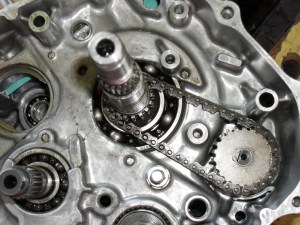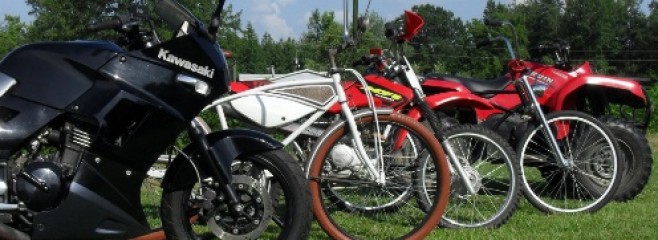Actually this article is a little late, I actually finished this engine up months ago, rode the snot out of it, and sent it home with its happy owner. Here are some pictures of the process. This is not nor is it intended to be a step by step guide. It just your chance to see something the average person normally never gets to see.
Let’s start with a view of the transmission and shift drum sitting in the now very clean engine case.

To keep the gaskets in place I use Hondabond 4 gasket sealer. This and similar products do not allow the gasket to squeeze out the way silicon based sealants sometimes do.

Here it is with the front half in place.

Next pic shows the reverse lock out lever (red arrow) and the shift actuator rod (gray arrow) installed into the rear crankcase half. The shifter rod passes completely through the crankcase to the linkage that operates the shift drum.

Back to the front of the engine here is the oil pump drive chain.

Now insert the camshaft, chain, and tensioner, be sure to line up the timing marks as noted in the service manual.

After adding the rest of the small parts that were laid out in a carefully organized fashion on the workbench put the front and rear covers back on.

The cylinder wear was very light so I felt safe just honing it out and replacing the piston rings.

Here’s a shot of the cylinder installed to the crankcase with the piston at top dead center

After everything else was back together I was ready to line up the timing marks and set the valve lash.

Check your service manual for the specification for your engine.
Everything else was just a reversing of the diss-assembly. Just keep putting parts back on until you have a working four wheeler again.













